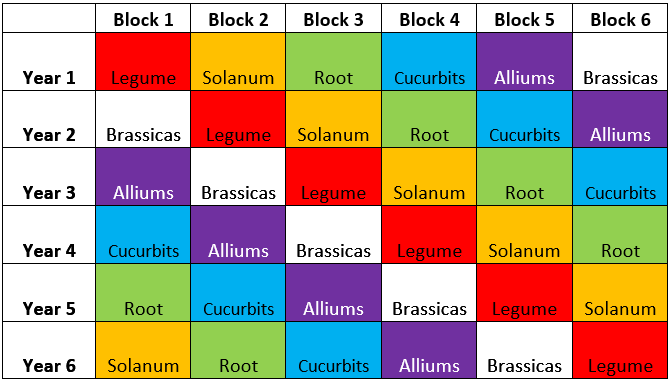The Victory Garden- Succession Planting and Crop Rotation
The best way to extend your harvest for fresh eating and preserving is through succession planting. Certain crops can be replanted at weekly intervals giving you vegetables all season long.
Laying out your garden in blocks is a great way to accomplish this and will also make seasonal crop rotation much easier for you to keep up with.
These two practices go hand in hand. There are several great interactive spreadsheets out there that will let you enter in your specific data and create a chart that you can follow for succession planting.
Depending upon the vegetable, the average time between planting is two to three weeks; this method will keep the harvest flowing throughout its growing period and stretch out the preserving step so that you are not under pressure to put up three bushels of green beans in one day!
We practice crop rotation for several reasons.
First, as we know, different crops have different needs. If we plant the same crop in the same place year after year we are continually drawing on the same nutrients which will deplete the soil. Over time the soil actually dies, making it impossible to grow anything.
Another important reason is to control pests and diseases. When harmful insects know that their favorite meal will be served in the same spot every year, they will set up a house in that location and wait for the dinner bell. Soil born diseases will act in the same way. Fungi, harmful bacteria, and viruses that cause everything from wilt to blight will happily live dormant in the soil, waiting for its favorite host to appear.
The trick is to disrupt the pest and disease cycle which happens through crop rotation, as well as introducing pollinators, beneficial insects, and companion planting which we will discuss in a future post.
Below is a chart based on block planting that is helpful in understanding crop rotation. The chart below shows heavy feeders following light feeders but it also breaks up vegetables into families based on what they either give or take from the soil. So let’s look at vegetable families for a moment.
Solanum or nightshade family includes tomatoes, peppers, potatoes, and eggplants. These are all very heavy feeders and prone to diseases and pests. They are also deeply rooted plants.
Brassica’s include cabbage, broccoli, cauliflower, Brussel sprouts, kale, and collards. These are another family of heavy feeders but are more prone to pests rather than disease. Their roots are more shallow.
Cucurbits include melons, summer and winter squashes, cucumbers, and pumpkins. These are also heavy feeders prone to both disease and pests and their roots are very shallow.
Alliums include onions, garlic, and chives. Also heavy feeders but, very pest and disease resistant and help to break up heavy soil.
Roots include radishes, potatoes, beets, carrots, and sweet potatoes. These are medium feeders, less prone to disease, and do a great job of loosening the soil deeper than alliums.
Legumes include peas and beans. These are light feeders, less prone to pests and disease and their roots contain nodules that fix nitrogen in the soil.
Lettuce, spinach, and other leafy greens are in the Asteraceae and Amaranthaceae family. They are light feeders and not overly prone to disease or pests. They do a great job in companion planting because they are short-season crops. These can be planted among vegetables in any of the families mentioned earlier.
Now that we know the reasons for crop rotation and the different plant families, we can use the chart to visualize the logic behind where and why we need to move our plantings every year. Crop rotation is the key to maintaining your soil’s optimum health and keep disease and pests at bay.


